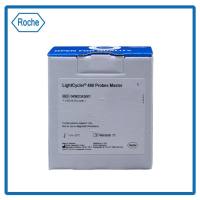The Preparation of Horseradish Peroxidase-Labeled Nucleic Acid Probes and Their Detection Using Enhanced Chemiluminescence
互联网
853
A range of labeling and detection systems for nucleic acids, many of which show specific advantages for particular applications is currently available to the researcher. The labels generally fall into one of two categories: primary labels, in which a detectable signal, such as a radioisotope or a fluorophore, is introduced directly into the probe, and enzymatic labels, in which an enzyme is used to catalyze a signal-generating reaction. In the latter case, the signal may be a fluorophore, a visibly colored compound (chromophore), or light generated by a chemiluminescent reaction. The enzyme may itself be directly coupled to the probe (a direct label) or may be introduced by means of an antibody-enzyme or streptavidin-enzyme complex, which detects hapten- or biotin-labeled probe (an indirect label). This type of indirect approach has been widely used with probes labeled with molecules, such as fluorescein, biotin, and digoxygenin. An example of such a system using fluorescein-labeled probes detected by an antifluorescein alkaline phosphatase conjugate, which in turn catalyzes highly sensitive chemiluminescent detection, is described in Chapter 8 .









